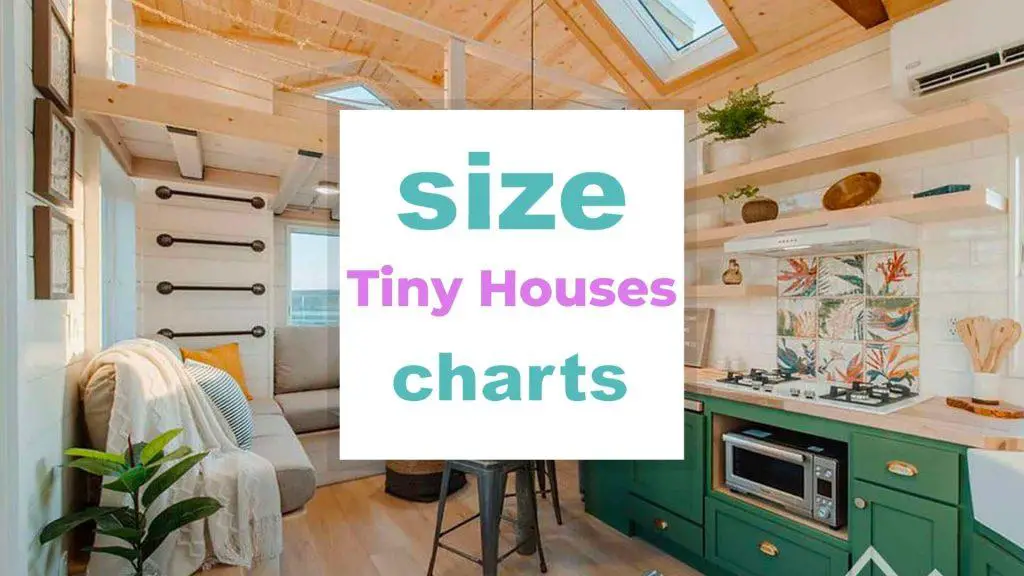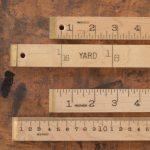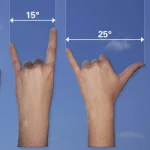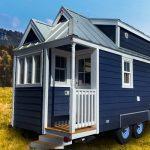Tiny Houses Size Charts
Tiny houses are compact, autonomous dwellings that typically range in size from 100 to 400 square feet. These tiny houses may either be fixed to a foundation or left on wheels, giving their owners the flexibility to park them anywhere they like. These constructions are available in a wide range of shapes and sizes. A tiny home is 11 times smaller than a typical American house. Although they can be premade, many tiny homes are completely custom-built by their owners. Nowadays, big businesses like Ikea sell tiny homes under their own name (skip straight to the Tiny Houses Size charts).

A social and architectural movement that promotes the reduction and simplification of living quarters is the tiny-house movement. The tiny house community is headed by people who want to live more freely by downsizing their homes and developing their ability to survive on little. Although the movement’s origins can be found in the 1970s, Jay Shafer created one of the first tiny homes in 1999.
Numerous tiny-home communities have sprung up all throughout the United States, including in cities like Olympia, Washington; Austin, Texas; and Sonoma, California. The trend has become an appealing option to many people who want to build their own homes, move to the city outskirts, and become more independent. Reduced financial stress, a smaller environmental impact, and fewer personal possessions all contribute to freedom. Because it is an affordable option and easy to access, displaced homeless persons are also choosing it.
This article will help you get started as a tiny house owner because it includes information on the sizes of different types of tiny homes as well as answers to some of the most frequently asked questions on the subject online.
Jump right into the Frequently Asked Questions
Related: Bed sheet size and dimensions by type of bed (with size chart), Bed Size Chart – Measurements And Dimension for king, queen,… beds, Room Size for beds and mattresses
Tiny Houses Size Table of Contents
Tiny Houses Size Chart
Related: Nightstand Size and Dimensions for Bedroom
Typical Tiny Houses Size Trailer Dimensions
| TRAILER LENGTH (ft) | TRAILER LENGTH (m) | TRAILER WIDTH (ft) | TRAILER WIDTH (m) | SQUARE FOOTAGE | SQUARE METERS |
| 8 | 2.44 | 8 | 2.44 | 64 | 5.95 |
| 12 | 3.66 | 8 | 2.44 | 96 | 8.92 |
| 20 | 6.10 | 8 | 2.44 | 160 | 14.86 |
| 22 | 6.71 | 8 | 2.44 | 176 | 16.35 |
| 24 | 7.32 | 8 | 2.44 | 192 | 17.84 |
| 26 | 7.92 | 8 | 2.44 | 208 | 19.32 |
| 28 | 8.53 | 8 | 2.44 | 224 | 20.81 |
| 30 | 9.14 | 8 | 2.44 | 240 | 22.30 |
| 34 | 10.36 | 8 | 2.44 | 272 | 25.27 |
| 36 | 10.97 | 8 | 2.44 | 288 | 26.76 |
| 43 | 13.11 | 8 | 2.44 | 344 | 31.96 |
Dimensions for a Tiny House on a Utility Trailer
Related: Standard Size of Bedroom: All You Need to Know
| Length (ft) | Length (m) | Width (ft) | Width (m) | Square footage | Square Meters | DESCRIPTION |
| 20 | 6.10 | 8 | 2.44 | 160 | 14.86 | One of the most popular sizes because tiny house residents who wish to travel frequently can easily carry it. |
| 24 | 7.32 | 8 | 2.44 | 192 | 17.84 | This well-liked size provides extra usable room while remaining near enough to 20′ to be convenient to tow. |
| 30 | 9.14 | 8 | 2.44 | 240 | 22.30 | Usually favored by those who intend to reside in their homes permanently. |
Dimensions for Tiny Houses on a Goose-neck Trailer
Related: Rug sizes for bedrooms – all rug dimensions for all sizes of beds
| Length (ft) | Length (m) | Width (ft) | Width (m) | Square footage | Square Meters | DESCRIPTION |
| 26 | 7.92 | 8.5 | 2.59 | 221 | 20.53 | A 26-foot gooseneck, the most common size, provides 33 feet of usable space because the extra length will ride above the truck towing your home. |
| 36 | 10.97 | 8.5 | 2.59 | 306 | 28.43 | This is the longest a gooseneck trailer can be. |
Dimensions for Tiny Houses on a Deck Over Trailer
Related: Rv Size Chart – A Guide To Choosing RVs and Campers
| Length (ft) | Length (m) | Width (ft) | Width (m) | Square footage | Square Meters | DESCRIPTION |
| 20 | 6.10 | 8.5 | 2.59 | 170 | 15.79 | One of the most famous sizes for tiny home residents who plan to travel extensively because of how simple it is to transfer. |
| 24 | 7.32 | 8.5 | 2.59 | 204 | 18.95 | This well-liked size provides extra usable room while remaining near enough to 20′ to be convenient to tow. |
| 30 | 9.14 | 8.5 | 2.59 | 255 | 23.69 | Usually favoured by those who intend to reside in their homes permanently. |
Dimensions for a Tiny House on a 10-foot Long Trailer
Related: RV Mattress Size Chart – Ultimate Buying Guide
| Length (ft) | Length (m) | Width (ft) | Width (m) | Square footage | Square Meters | DESCRIPTION |
| 26 | 7.92 | 10 | 3.05 | 260 | 24.15 | Among the most famous sizes because tiny house residents who wish to travel frequently can easily carry it. |
| 30 | 9.14 | 10 | 3.05 | 300 | 27.87 | This length enables greater usable space for people who have a family or prefer extra space within their tiny home. |
Tiny House Interior Dimensions
Related: Interior Doors Sizes: Minimum & standard dimensions
| Length (ft) | Length (m) | Height (minimum ceiling height) (ft) | Height (minimum ceiling height) (m) | Width (in) | Width (cm) |
| 19 | 5.79 | 6 | 1.83 | 50 | 127.0 |
| 24 | 7.32 | 7 | 2.13 | 60 | 152.4 |
| 26 | 7.92 | 8 | 2.44 | 70 | 177.8 |
| 29 | 8.84 | 10 | 3.05 | 80 | 203.2 |
Learn more about Tiny Houses Size and More (video)
Frequently Asked Questions
What is the smallest size of a tiny house?
The rules in the area and the owner’s preferences essentially determine the smallest size that a tiny house can be. A tiny house can be as little as 8 feet by 8 feet (64 square feet/ 5.95 square meters). To be sure that something is permitted, you must first confirm the laws in your state.
What is the biggest sq ft tiny house?
The state’s laws and the homeowner’s preferences heavily influence the size of a tiny house. However, depending on the kind of trailer being utilized, a tiny house can be as broad as 10 feet (3.04 meters) and as long as 43 feet (13.1 meters).
Goose-neck trailers are typically longer in length and can fit homes up to 43 feet (13.1 meters) long, yet they can only fit homes up to 8.5 feet wide. On the other hand, the 10-foot trailer can fit a tiny house that is 10 feet tall (3.04 meters), but it typically won’t fit a house that is longer than 30 feet (9.14m).
How much do Tiny houses cost?
The cost-effective buying price of a tiny home, which runs from $20,000 to $50,000, is the main source of its financial advantages. The average American home costs $284,600, in contrast. In addition, the cost of maintenance and utilities like gas and electricity is considerably less than the price of a typical home.
Due to its accessibility, nearly 70% of tiny homeowners in the U.S. do not have a mortgage, which allows 55% of them to have greater savings than the typical American.
Rent, building permits (wide load permits), energy costs (depending on your energy consumption profile), and insurance must be paid for tiny homes parked on a rented property, but the cost is far lower than that of an apartment. Because tiny homes are not regarded as permanent structures or as improvements to the land, their value does not rise along with the cost of property taxes.
Tiny house dwellers prefer house dimensions and house plans that will allow for common features such as a sleeping loft (bedroom loft, loft bed, loft floor), livable space (habitable space), sloped ceiling, and adequate ceiling heights (finished ceilings are important), backyard space, finished floors, battery banks for energy usage and battery cells, and dual-purpose features, all of which may cost extra. Yet, tiny houses remain one of the most affordable housing options in the US.
What is the most popular size of a tiny home?
The most popular size used by tiny homeowners is the 200 sqft tiny house. homeowners who can customize their tiny homes can give priority to their needs and wants. The size of the dwelling might also change when you live among other tiny houses.
Is 600 sq ft a tiny house?
The average size of a tiny house for sale in the United States is only 225 square feet, which is almost eight times less than a regular home. Tiny homes are typically defined as having under 600 square feet.
Thus, a 600 sqft house does not particularly fit into the definition of a tiny house, although, it may be classified as one.
What is the ideal tiny house height?
The Department of Transportation has restrictions effectively set on tiny house sizes. You must however consider bridges when building your house on wheels as some designs could protrude and hit bridges when traveling.
The majority of bridges over your main thoroughfares and numerous secondary streets are constructed with a clearance of at least 13.5 feet. You might think about building your tiny house just shy of that.
What is the ideal tiny house width in tiny houses size?
The size of your tiny house is dependent on the department of transportation if you intend to travel with it. It is important to note that this measurement starts at the two spots that are the widest, which are often at the wells of the wheels. When measuring a fender or tire, start at the outside and go around to the opposite side.
You can build your tiny house as wide as you want so long as you stay within the restrictions of the area and consider how some designs may cause a part of the house to protrude. Build such that there is just the right amount of insulation around the wheel well to optimize internal space.
What is the Ideal Tiny House Length?
The following is the most crucial information about tiny house proportions. If you wish to increase your square footage, we have to lengthen the trailer as dimensions are restricted by the DOT’s maximum size.
Your trailer is another factor in this. It is worth noting that the Department of Transportation primarily uses weight as its primary determining factor of upper limits. You will require special permits if your trailer and tiny house weigh higher than the area’s specified gross vehicle weight.
How much is a 300 sq ft in tiny houses size?
A 300-square-foot tiny house’s cost depends on a variety of things. Your desired home’s size, the materials you select, and the number of modifications you include will all directly affect the price. The price for a 300 sq ft tiny house will also rely on the type of materials you choose to utilize and the home’s amenities.
If you choose for a cheaper choice, you may need to add extra storage and work with a lesser budget. On the other hand, you can anticipate paying more if you choose a more opulent alternative.
A 300-square-foot house typically costs between $30,000 and $40,000 to build. The complexity of the design and the materials you use, though, can change that number. A tiny house with an open layout will be less expensive to construct than one with several rooms. Similarly, a house constructed with contemporary materials like plywood and aluminum framing will be less expensive than one constructed with more conventional ones like brick and stone.
Conclusion
Tiny homes are compact, autonomous dwellings that typically range in size from 100 to 400 square feet. A tiny home is 11 times smaller than a typical American house. Although they can be premade, many tiny homes are completely custom-built by their owners. Downsizing living quarters is supported by the tiny-house movement, a social movement. The aforementioned post provided dimensions for several types of tiny homes as well as responses to some of the most frequently asked concerns regarding tiny homes on the internet.
Keep in mind that the size of a tiny house mostly depends on your preferences, the resources available to you, and the laws of the state in which you wish to live. A tiny house can range in size from 8′ × 8′ (64 sq ft/5.95 sq m) to 10′ x 43′ (430 sq ft/39.9 sq m); the most common size utilized by most tiny homeowners is 200 sq ft (18.6m2).
Buying a tiny house is rather inexpensive; typically, they range in price from $20, 000 to $50,000. Also, the real cost of a tiny house will largely depend on the type of features you choose to include in it.
Please feel free to contact us by leaving a note in the space below. We will get back to you as soon as we can.
Picture in this post is from Tumbleweedhouses.com
Related to Tiny Houses Size
- Barbie Doll Size : What are different sizes of Barbie ?
- Blanket sizes chart : blanket sizes and dimensions in inches & cm
- Tablecloth size chart – What are standard tablecloth sizes ?
- How Many Meters Are In A Yard?
- How Many Centimeters are 8 Inches?
- Knife Sizes and Different Types
- 4 Inches is How Many Centimeters?
- Light Bulb Base Sizes : What size light bulb base do I need?
- Tesalate Towel Size Guide
- Light bulb Size : What are the different and standard bulb sizes?
- Duvet Sizes: What is a Standard-Size Duvet?
- Single Car Garage Size and Dimensions
- How High Is A Story?
- How Much Does 1 Cup Of Rice Weigh?
- Cast Iron Skillet Sizes: What Size Do I Need?
- Dollar Bills Size Chart
- Pizza Sizes: Which One to Order?
- How To Measure A Foot Without A Ruler
- Wine Glass Size Chart
- Tiny Houses Size Charts
- How Many Inches Are In 20 Centimeters?
- How To Measure 1 Meter Without A Ruler?
- Nightstand Size and Dimensions for Bedroom























